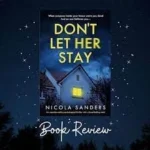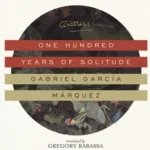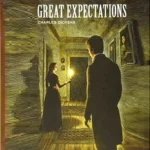Virginia Woolf’s “To the Lighthouse PDF” stands as a cornerstone of modernist literature, captivating readers with its intricate narrative structure, profound themes, and rich characterizations. In this article, we will delve into the depths of Woolf’s masterpiece, exploring its themes, characters, symbolism, and enduring relevance.
| Name of PDF | To the Lighthouse PDF |
|---|---|
| No Pages | 200 |
| Author | Virginia Woolf |
| Originally Published | May 5, 1927 |
| Language | English |
| Genres Characters: | Novel, Fantasy Fiction Mrs. Ramsay, Mr. Ramsay, Charles Tansley, Lily Briscoe, James Ramsay |
| Size | 0.7 MB |
| Chek, latest edition |
Table of Contents
Virginia Woolf: A Brief Biography
Virginia Woolf, born in 1882, was a pioneering figure in the literary world, known for her innovative writing style and exploration of complex psychological landscapes. Growing up in an intellectual household, Woolf was exposed to literature and ideas from a young age, shaping her future as a writer. Despite battling mental health issues throughout her life, Woolf produced a remarkable body of work, including novels, essays, and literary criticism.

Overview of the Plot
“To the Lighthouse” is divided into three parts, each offering a unique perspective on the Ramsay family and their guests. In Part One, we are introduced to the Ramsays and their circle of friends as they spend a summer on the Isle of Skye. Part Two, titled “Time Passes,” presents a haunting interlude, depicting the passage of time and the impact of World War I on the Ramsay’s summer home. Finally, Part Three follows the Ramsays and their journey to the lighthouse, exploring themes of memory, loss, and reconciliation.
Themes Explored
Time and Change
One of the central themes of “To the Lighthouse” is the passage of time and its transformative effects. Woolf skillfully portrays the shifting dynamics of relationships and the inevitability of change, weaving together the past and present to create a tapestry of memories and emotions.
Perception and Subjectivity
Woolf’s exploration of perception and subjectivity is another key aspect of the novel. Through her use of stream-of-consciousness narrative techniques, Woolf invites readers into the inner thoughts and feelings of her characters, challenging traditional notions of reality and truth.
Gender Roles and Identity
“To the Lighthouse” also delves into questions of gender roles and identity, particularly through the character of Mrs. Ramsay. Woolf exposes the limitations placed on women in society and the struggle for self-expression and autonomy.
Character Analysis
Mrs. Ramsay
Mrs. Ramsay serves as the emotional center of the novel, embodying warmth, compassion, and domesticity. Her presence looms large even in her absence, shaping the lives of those around her and leaving a lasting impression on the narrative.
Mr. Ramsay
In contrast to his wife, Mr. Ramsay is depicted as a complex and often…
Symbolism in “To the Lighthouse”
The Lighthouse
Writing Style and Narrative Techniques
Critical Reception and Legacy
Adaptations and Influences
Why “To the Lighthouse” Remains Relevant Today
About the Book: To the Lighthouse PDF Book Download by Virginia Woolf
James Ramsay, while cutting out pictures from the illustrated catalogue of Army and Navy stores, clouded what is actually at hand, since to such people even in the earliest childhood, any turn in the wheel of sensation has the power to crystallise and transfix the moment upon which its gloom or radiance rests. As his mother spoke, he imbued the picture of a refrigerator with heavenly bliss. It had a happy fringe.
Though he appeared to be the epitome of stark and uncompromising severity, with his high forehead and fierce blue eyes, impeccably candid and pure, frowning slightly at the sight of human frailty, his mother, watching him carefully guide his scissors around the refrigerator, imagined him all red and ermine on the bench or directing a stern and momentous enterprise in some crisis of public affairs. The wheelbarrow, the lawnmower, the sound of poplar trees, leaves whitening before rain, rooks cawing, brooms knocking, dresses rustling—all these were so colored and distinguished in his mind that he had already developed his private code, his secret language.

The kids claimed that they didn’t mind, though. It was not his manners or his features. It was his perspective. When they discussed anything fascinating—people, music, history, anything—and even remarked that it was a nice evening, so why not sit outside—they complained about Charles Tansley on the grounds that, up until he turned everything around and made it somehow reflect himself and make fun of them, he was not satisfied.
They said he would visit picture galleries and ask people if they liked his tie. Rose remarked, “God knows, one did not.” The eight sons and daughters of Mr. and Mrs. Ramsay vanished from the dinner table as quietly as stags do the night before, seeking refuge in their beds in a home devoid of any other private space where they could discuss anything and everything, including Tansley’s tie.
The sun poured into those attics, where a single plank separated from each other so that every footstep could be clearly heard, and the Swiss girl sobbed for her father, who was dying of cancer in a valley of the Grisons, while the Reform Bill passed. The sun also lit up bats, flannels, straw hats, inkpots, sea birds, and butterflies. Paintpots, beetles, and tiny bird skeletons were among the items found in To the Lighthouse PDF Book Download. A scent of salt and weeds, which was also present in the towels due to their gritty sand content, emanated from the long, frilly seaweed strips that were affixed to the wall.
That was her husband’s favorite view, she continued, pausing and widening her eyes. She took a little break. However, she added, artists were now present. One of them was actually standing a short distance away, wearing a Panama hat and yellow boots. He was being watched by ten small boys, but he was behaving gravely, softly, and absorbedly while staring with a deep sense of contentment on his round, red face. After a while, he dipped and painted a soft mound of pink or green with the tip of his brush.
She claimed that ever since Mr. Paunceforte had visited three years prior, all the photos had been that way—green and grey, with sailing boats the color of lemons and pink women lounging on the beach. However, she added, sneaking a surreptitious glance as they went, her grandmother’s friends went to the utmost lengths; they blended their own colors, ground them, and covered them with damp cloths to keep them moist.
Mr. Tansley assumed that she wanted him to notice that the man’s photo was revealing, was that correct? Did the colors lack coherence? Did someone say that? He was coming to see himself, and everything he had ever known had gone a little crooked under the influence of that extraordinary emotion that had been growing the entire walk. It had started in the garden when he had wanted to take her bag and increased in the town when he had wanted to tell her everything about himself.
It was incredibly peculiar. That explained why they hadn’t been speaking. She decided that poor Charles Tansley had been shed after snapping out of the anxiety that had taken hold of her and became cool, amused, and even slightly nasty in an attempt to make up for her needless emotional outlay. The Lighthouse PDF Book She didn’t really care about that.
She willingly presented Charles Tansley, who had rejected her young son, to her husband if he needed to make sacrifices, which he did. She listened for a moment longer, head raised, as though she were waiting for a familiar sound—some steady mechanical sound—and then, from somewhere in the garden, her husband was beating on the terrace. She heard something rhythmic, half spoken, half chanted—something between a croak and a song—and she was reassured once more that everything would be okay. She then looked down at the book on her knee and saw the picture of a pocket knife with six blades that James would have to be extremely cautious to cut out.
Mr. Ramsay gave them a sneer. He didn’t appear to see them as he glared at them. They were both a little uneasy about that. They had witnessed something together that they were not supposed to see. They had invaded someone’s personal space. Therefore, Lily reasoned, it was probably just his way of getting away from her and moving, which is why Mr. Bankes mentioned the cold practically quickly and recommended going for a walk. Yes, she would come. However, she found it impossible to look away from her photo.
Every evening, they would routinely visit, driven by some sort of need. It seemed as though the water lifted, sending thoughts that had become motionless on dry earth sailing, and even providing some physical respite for their bodies. Access the Lighthouse Document The body floated, the heart expanding with the blue pulse of color that first filled the water, only to be checked and chilled the next instant by the prickly blackness of the ruffled waves.
Then, behind the massive black rock, almost every evening spurted unevenly, requiring one to watch for it. When it did, it was a joy to see a fountain of white water, and in the interim, as one waited for that, they observed, on the white semicircular beach, wave after wave smoothly shedding a mother-of-pearl film repeatedly.

They stood there, grinning at each other. They were both filled with a shared sense of excitement as they watched the waves move. This was followed by the swift, cutting race of a sailing boat that, after slicing a curve in the bay, stopped, shivered, and let down its sails. Then, in an instinct to finish the picture, both of them turned to look at the far-off dunes, and instead of feeling happy, they felt a sense of sadness because, partly because the thing was completed and partly because, as Lily thought, distant views seemed to outlast the observer by a million years and already communicate with a sky that revealed an earth completely at rest.
Because Bankes was childless and a widower, while Ramsay lived in a world of children, he was worried that Lily Briscoe would not disparage Ramsay—a great man in his own right—but rather understand the circumstances that stood between them. He was also perhaps worried about clearing his own mind of the accusation that he had dried and shrunk.
Their friendship, which had started many years previously, had ended on a Westmorland road where a hen had spread her wings before her brood. Ramsay had then married, and although their lives had diverged, there had been a tendency for them to repeat themselves when they later met—certainly not because of anyone’s fault.
To the lighthouse summary
In summary, “To the Lighthouse” stands as a timeless masterpiece that continues to captivate readers with its exploration of time, memory, and the human condition. Virginia Woolf’s innovative narrative techniques and profound insights into the complexities of life ensure that the novel remains as relevant today as it was upon its publication. Wikipedia
FAQs about To the Lighthouse PDF
What inspired Virginia Woolf to write “To the Lighthouse”?
Virginia Woolf was inspired by her own experiences and childhood memories, particularly her summers spent in St. Ives, Cornwall, and her complex relationship with her parents.
How does Woolf’s writing style contribute to the novel’s impact?
Woolf’s use of stream-of-consciousness narrative techniques allows readers to delve deeply into the inner thoughts and emotions of the characters, creating a rich and immersive reading experience.
Are there any film adaptations of “To the Lighthouse”?
While there have been several attempts to adapt “To the Lighthouse” for the screen, including a BBC television film in 1983, no major feature film adaptation has been produced to date.
What role does the lighthouse play as a symbol in the novel?
The lighthouse symbolizes various themes, such as enlightenment, clarity, and transcendence. It represents the characters’ aspirations, desires, and quest for meaning and understanding in their lives.
How does “To the Lighthouse” reflect Woolf’s own experiences and worldview?
“To the Lighthouse” reflects Woolf’s exploration of themes such as time, memory, and the complexities of human relationships, which were deeply influenced by her own struggles with mental health and her feminist beliefs.
Is To the Lighthouse difficult to read?
It is not an easy book to read
Why was To the Lighthouse banned?
To the Lighthouse has mention of suicide
What is the book To the Lighthouse about?
explores the passage of time and the complexities of human relationships
What is the message in To the Lighthouse?
human experience is varied and complex





